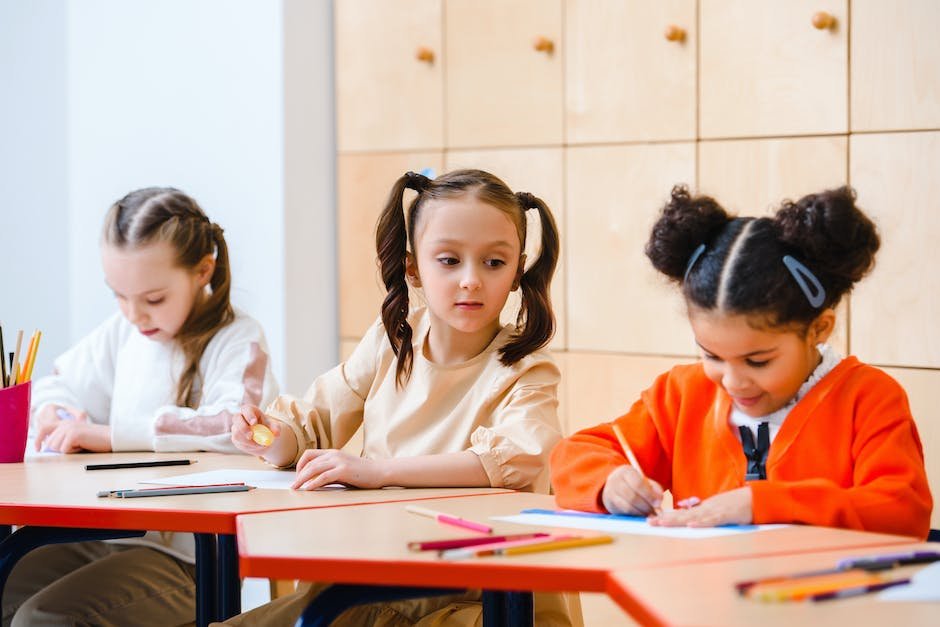
In the vast canvas of human diversity, Autism Spectrum Disorder (ASD) paints its unique strokes. With its various spectrums, ASD influences the learning needs and capabilities of affected children in distinct ways, making their educational journey a path requiring specialized attention. The quest for understanding autism and the ways to provide the most conducive educational environment to these children engenders a empathetic narrative that reframes autism not merely as a diagnosis, but as a different perspective requiring a uniquely tailored approach to learning. The landscape of supporting autism education comprise includes Individualized Education Plans, autism-friendly learning environments, role of therapists and specialists and coping strategies for parents, each crucial in ensuring an enriching education experience for children with autism.
Understanding Autism
Understanding Autism Spectrum Disorder and Its Impact on Education
For many families, receiving an autism spectrum disorder (ASD) diagnosis for their child can be both a source of anxiety and a doorway to understanding. This complex developmental disorder affects every individual differently, with its unique set of challenges, but it also brings certain gifts and talents. Let’s unpack what autism spectrum disorder means and how it impacts education, keeping in mind that each child is exceptional, bringing their own spark of creative genius to the table.
One might wonder, what is Autism Spectrum Disorder? It’s a neurological and developmental disorder, impacting how a person behaves, interacts socially, and learns. It is called a “spectrum” disorder because it encompasses a wide range of symptoms, skills, and degrees of impairment or disability. Some individuals may be quite gifted in specific areas such as art, math, or music, while others might struggle with basic social, academic, or life skills.
Now, how does ASD affect education? It varies greatly since ASD affects different children in different ways. Some children might require slight accommodations, while others might need more specialized education strategies. Let’s touch upon a few of these aspects:
- Social and Emotional Learning: Children with ASD might find it challenging to grasp social norms, emotions, or empathy, thus affecting their ability to interact smoothly in a typical classroom setting. Teachers often use visual aids, social stories, and role-playing to help these students learn and master these skills.
- Communication Barriers: Because ASD can impact a child’s ability to communicate, this can pose challenges within the classroom. Speech and language therapy can be beneficial, as can using augmentative and alternative communication (AAC) tools.
- Academic Performance: While some students with ASD may excel in certain subjects, others might struggle. Individualized Learning Plans (ILPs) can be greatly beneficial in this regard, targeting each child’s unique needs and strengths.
- Sensory Processing Issues: These might result in a child being hyper-sensitive or under-sensitive to their surroundings. Noise-cancelling headphones, seat cushions, fidget tools, or designated quiet spaces can help students manage these sensitivities within the school setting.
- Anxiety and Stress: Changes in routine or an overload of sensory input can cause stress for a child with ASD. Providing a predictable schedule, clear expectations, and calming techniques can alleviate some of this anxiety.
Through understanding and continued research, more effective strategies are being developed to support the educational journey of students with ASD. But remember, behind these educational modifications is a child – a child who brings their unique perspective to the world. It’s vital for teachers, classmates, and the broader community to embrace these differences, fostering an inclusive and accepting environment for all.
In recognition of the voyage that families and educators embark on when supporting a child with ASD, always remember that your efforts, patience, and love create a nurturing home and school environment where each child can thrive. On this journey, there may be surprises, unexpected achievements, and moments of pure joy. After all, these unique individuals have a way of teaching us much more about life than we could ever teach them.

Individualized Education Plans (IEPs)
Delving further into Individualized Education Plans (IEPs), let’s explore how these dynamic documents can benefit children with Autism Spectrum Disorder (ASD). First, let’s tackle what an IEP really is. Derived from the federal Individuals with Disabilities Education Act (IDEA), an IEP is a legal document tailored to each child’s learning needs. Prepared by a team comprising parents, teachers, school administrators, and other professionals, the IEP lays out the child’s present academic status, sets measurable annual goals, and proposes accommodations and modifications in teaching methods and materials to help the child progress in the school setting.
Children with ASD often exhibit unique learning styles and needs that simply may not be accommodated by traditional education settings. This is where IEPs step in, by providing personalized plans to ensure these children are getting the best possible education suited to their needs. They aid in creating a productive learning environment that understands, respects, and enhances their unique ways of interacting with the world.
One of the most beneficial features of IEPs for children with ASD is how they prioritize social skills training. Kids with ASD often struggle with fundamental social skills such as making eye contact, understanding social cues, and empathizing with others’ feelings. IEPs can incorporate dedicated time and resources to help these children develop these skills using various strategies, including social stories, visual cues, role-playing, and more.
IEPs also often include specialized instruction for children with ASD. This might encompass a range of teaching tactics from discrete trial training (DTT), used to break complex skills into simple, teachable parts, to picture exchange communication systems (PECS) for non-verbal children, where they can communicate their needs through pictures.
Furthermore, IEPs ensure that children with ASD enjoy shared access to the same opportunities as their peers. Along with academics, it’s vital for a child’s development to also focus on the ‘hidden curriculum’ – those unspoken rules or customs that are not explicitly taught but are an integral part of the school experience. Attending school assemblies, navigating lunchtimes, and participating in extracurricular activities can significantly enhance a child’s school experience and overall development.
Lastly, IEPs can play a significant role in transitioning children with ASD into the real world. As such, these plans might include work-based learning experiences, life-skills training, and connections to post-school services and support.
Remember, an IEP is not set in stone and should be a dynamic plan, constantly evolving as the needs and abilities of the child with ASD change. Regular reassessments are essential to adapt the plan to the child’s current circumstances and ensure they’re receiving optimal support.
Through IEPs, we can break down the barriers children with ASD might face in traditional education settings. By providing them with a comprehensive, individualized educational pathway that encompasses their unique strengths and weaknesses, we can cultivate a learning environment where they are respected, valued, and able to reach their full potential.

Creating an Autism-friendly Learning Environment
Finding the perfect learning environment that caters to a child with Autism Spectrum Disorder (ASD) is nothing short of a journey. While it’s already established that their educational experience may need to be tailored to their unique capabilities, what does this look like on a day-to-day basis in a classroom?
One key aspect of supporting a child with ASD within an educational setting is the implementation of a consistent routine. Children with ASD usually respond positively to predictability; knowing what’s coming next can help reduce anxiety, enabling them to focus on learning. Structured schedules, visual aids, and repeated routines become a irreplaceable part of the school day. The classroom setting should also incorporate the preference for structure, with each area of the room clearly defined for specific activities.
Adaptation of teaching methodology is another critical aspect. Given the diverse range of learning styles among children with ASD, adopting a tailored teaching approach is pivotal for effective learning. For instance, visual supports tend to be quite effective, and can include schedules, social stories, or visual cues on work sheets. Furthermore, utilizing technology can also be significantly beneficial, as educational software offers a multi-sensory learning experience which could enhance engagement and comprehension.
Children with ASD may also benefit from an environment that focuses on their interests. By capitalizing on a child’s natural fascinations, the interest-driven learning can promote attention, engagement, and comprehension. This can easily be incorporated into the school day by using it as an incentive to complete less desirable tasks or even integrating it into academic activities.
A low student-to-teacher ratio can greatly benefit a child with ASD. Having more one-on-one instruction time can allow the freedom for educators to use more in-depth, hands-on, and personalized teaching techniques. Small-group settings can often be less overwhelming and provide more opportunities for direct teaching and prompt feedback.
A considerate learning environment for a child with ASD should also extend beyond the four walls of the classroom. This includes the recognition and acceptance from peers. Organizing activities that promote engagement with classmates can foster a sense of belonging, reduce chances of social isolation, and build a holistic understanding of diversity amongst all students.
Finally, and most importantly, a suitable educational environment for a child with ASD must uphold the principle of respect. Respect for their individuality, for their pace, their preferences, and their challenges. By focusing on their strengths rather than their difficulties, an environment can foster confidence, participation, and learning.
In essence, crafting a suitable educational environment for children with ASD involves a blend of structure, tailored teaching methodology, low student-to-teacher ratio and acceptance, while utilizing interests and integrating technology. Above all, respect and patience must serve as the guiding principles. With these elements in place, a child with ASD can not just learn, but thrive.

Involving Therapists and Specialists
The Role of Therapists and Specialists in an Autism Education Plan
Therapists and specialists are like unsung heroes, that play an incredibly crucial role in an Autism education plan. Their specialized knowledge and unwavering dedication are foundational to making beneficial progress in autistic child’s education. They work in tandem with the whole cadre of parents, instructors, and caregivers to design tailor-made remedies for the substantial hurdles an autistic child often encounters in learning environments. But, their role is much more than just fixing these problems, they weave their magic into the very core of the individualized curriculum to help create a transformational educational experience for these children. Let’s delve into this a bit more.
There are many ways that therapists and specialists contribute to the education plan but perhaps one of their primary responsibilities is to help create a stable and predictable environment which is structured around the child’s unique needs. Whether it’s occupational therapists helping children to improve motor skills or manage daily tasks, or speech therapists assisting children to overcome communication barriers, each therapy has its place rooted in a child’s individual needs assessed via their Individualized Education Plan (IEP).
Behavioral therapists or psychologists also play a core role, particularly in addressing the social and emotional needs of children with ASD. They guide children in understanding and navigating social norms, managing emotions, and developing coping strategies. Many use behavior modification strategies, such as Applied Behavior Analysis (ABA), which involves understanding a child’s behavior and modifying the environment to encourage positive behaviors.
Another key area where therapists and specialists come into play is in the transition planning for adolescents with ASD. As part of the IEP team, representatives from agencies that provide post-school services can help plan and coordinate the transition from school to adult life. Such planning can involve vocational training, independent living skills, and community involvement, equipping students for a fulfilling life beyond the school.
School psychologists can also conduct regular reassessments of the child’s progress and make necessary modifications to the learning framework to keep it aligned with the child’s evolving needs. They provide input to help modify teaching methodologies, suggesting modifications to accommodate the unique learning styles and sensory sensitivities of children with ASD. For example, they might suggest visual aids or assistive technology, knowing that many children with ASD are visual learners.
Specialists can also help implement instructional strategies such as discrete trial training (DTT), Picture Exchange Communication Systems (PECS), or Social Stories. These strategies require deep expertise in their planning and execution, which therapists bring aboard. They can also help adapt learning materials and instructional delivery to match a child’s specific learning style while capitalizing on their special interests.
In the journey of an autistic child’s education, therapists and specialists are like a beacon of light guiding the voyage alongside the entire team – parents, teachers, caregivers. They ensure the child’s academic, social, and emotional success by dedicating themselves for the unique needs of each child. And, equally significant, they help inspire an inclusive environment where each child is understood, respected, and loved, and where they can truly thrive.
Coping Strategies for Parents
Engaging Therapists and Other Specialists in the Autism Education Plan
In embarking on the educational journey of a child with Autism Spectrum Disorder (ASD), the role of therapists and specialists becomes vital. They bring with them the expertise to address various developmental challenges and equip the child with the necessary tools to succeed. Along with parents and educators, they form a formidable team working towards the holistic development of the child with ASD.
Occupational therapists, for instance, play an instrumental role in refining motor skills and helping the child perform daily tasks independently and efficiently. They use activities designed to improve fine and gross motor skills, along with sensory processing abilities.
Simultaneously, speech therapists contribute significantly by helping children with ASD overcome the hurdles they face in communication. They introduce children to tailored strategies to improve both verbal and nonverbal communication skills, making it easier for them to express themselves.
Behavioural therapists and psychologists are equally essential, particularly in addressing the social and emotional needs of children with ASD. Working closely with these children, they help develop coping mechanisms, social nuances, and emotional responses.
Implementing Proactive Behavior Modification Strategies
Behavior modification strategies like Applied Behavior Analysis (ABA) can be pivotal in managing disruptive behaviors and promoting desired ones. ABA employs positive reinforcement to facilitate behavioral change, which often leads to improvements in various skill areas like communication, social skills, and academics.
Planning Transitions for Adolescents with ASD
As children with autism grow into adolescents and young adults, planning for transitions becomes indispensable. Whether it’s the shift from elementary to middle school or the monumental leap towards independent living, each transition can significantly impact a child with ASD. Preparing them for such changes should involve efforts aimed at vocational training, independent living skills, and facilitating a seamless move to adult health care services.
Adapting and Evolving with Time
Every child is unique, and so is their journey with ASD. It is critical to regularly reassess the child’s progress and modify the strategies accordingly. A constant evolution in the approach will ensure its relevance and effectiveness.
Instructional strategies such as Discrete Trial Training (DTT), Picture Exchange Communication Systems (PECS), and social stories can be extremely beneficial for these children. These strategies serve to enhance their understanding, communication, and socialization skills.
The Power of Collaboration
Finally, remember that this journey is a shared one. The collaboration among parents, teachers, caregivers, therapists, and specialists can create a rounded support system that fosters progress across academic, social, and emotional aspects.
In the end, it’s about providing a nurturing environment where the child feels safe, understood, and loved. With patience, love, and the right strategies, managing the educational journey of a child with autism can serve to open new windows of learning, growth, and love.
Bridging the gap between autism and a fulfilling, rewarding education is a testament to human capability. As we delve into ASD and the various strategies that facilitate effective education plans, it becomes evident that the role of every stakeholder, from parents and therapists to educators, is akin to scaffolding a structure that supports the child’s learning journey. By embracing these challenges with resilience, self-care, and maintaining a network of support, these remarkable individuals can navigate the distinct challenges of ASD not merely as predictive difficulties, but as avenues brimming with potential for growth and collaboration in the realm of autism education.




